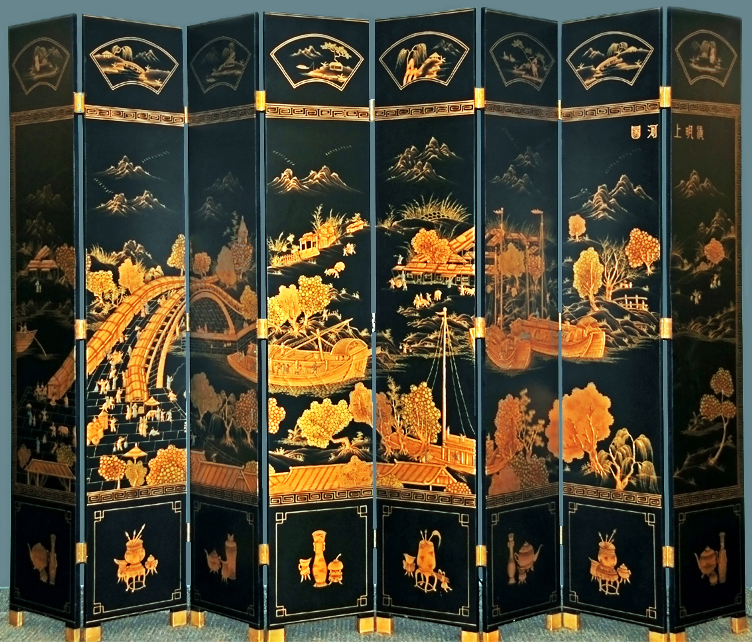Chinese lacquer: spreading Chinese aesthetics overland, via sea

file
Chinese lacquer screen
China is among the earliest cultural centers to develop a distinct lacquer art. Chinese lacquer ware was indeed part of the breeding ground for ancient Chinese aesthetics that would come to influence and benefit both the East and the West. The molds and styles of ancient Chinese lacquer ware are elegant and vivid, with surfaces depicting scenes from Chinese legends rendered in rich and strong colors. These pieces embody the features of Chinese aesthetics, both for practical function and purely for beauty’s sake.
China began exporting lacquer ware as early as the Han Dynasty (207 BCE – 220). During that time, it was shipped with silk fabrics, gold and cast iron implements overland and via the sea to Northeast Asia, Southeast Asia, and Western Asia. As it was carried westward along the Silk Road, eventually making its way to Europe through Persia, Chinese lacquer ware’s journey spread the culture of Chinese aesthetics to the world. It became integrated into European culture. Both Marco Polo in the 13th century and the Italian Jesuit missionary Matteo Ricci in the 16th century mentioned the exquisiteness of Chinese lacquer ware in their travel notes.
Between the 17th-18th century, especially under the reign of Louis XIV, Chinese lacquer ware was regarded as a luxury and particularly well-received in the French court. The beauty of Chinese lacquer has contributed to the Western architectural styles, furniture design, painting, and even consumption patterns. It has influenced Western aesthetic standards for centuries.
Pan Tianbo is from the School of Media and Film at Jiangsu Normal University.
Translated by Zhang Mengying
Revised by Charles Horne
